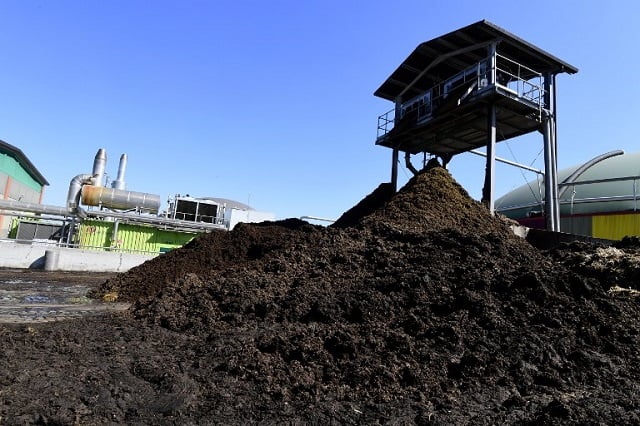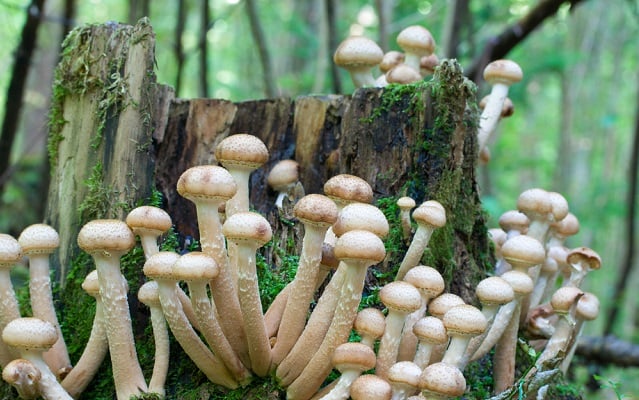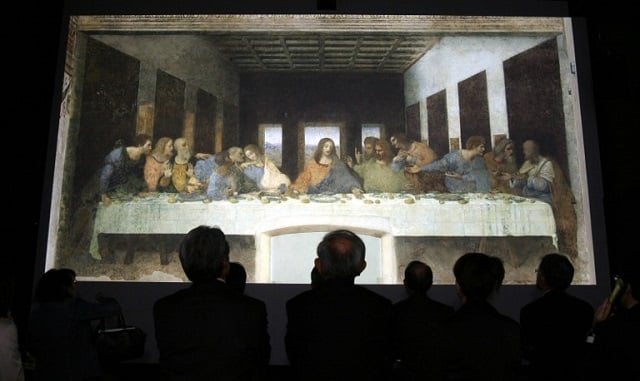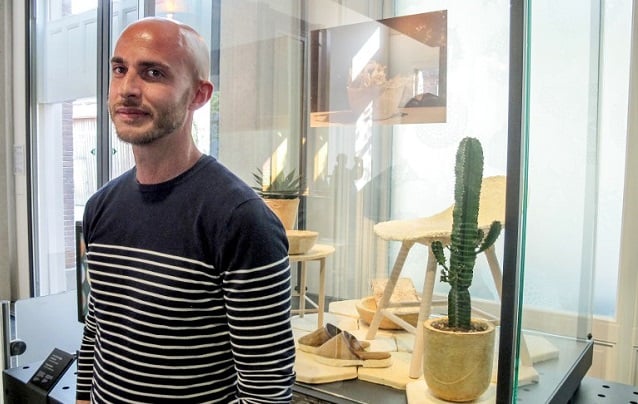A pair of light brown slippers, bowls, lampshades and even a chair are also among the everyday objects that artist Maurizio Montalti has been fashioning from various fungi, such as the “mushrooms that you find in the forest when you take a walk.”
Montalti, 36, hopes one day his new, sustainable material could even replace plastic, made from diminishing fossil fuels and difficult to recycle.
“I started working with fungi as part of my design practice a few years ago,” he told AFP, saying he was seeking a “different vision” on the benefits of humans engaging “with species, which are usually disregarded, such as fungal organisms.”
His prime material is mycelium, the white, organic and underground part of a mushroom composed of a network of tiny threads. At first invisible to the human eye, the network can become so dense that it grows into a visible, furry mass.
READ ALSO: Farmers turn cowpats into crockery at Italy's Shit Museum
Photo: Miguel Medina/AFP
“Mycelium is a very interesting product because it is able to break down all leaves for instance, or all kinds of products that we don't use anymore,” said Ilja Dekker, technician at the world's only microbe museum, Micropia, in Amsterdam.
This means it can be used to make different products.
“It can be used to build all types of things like vases, things that we can put inside our houses. But also to build our houses, as a building material to actually make a house,” she said.
Micropia, an interactive museum housed next to Artis, Amsterdam's zoo, is hosting a small permanent exhibition of Montalti's work as part of its mission to highlight how useful microbes are.
Cooking fungi
His concept of “growing design” allows objects to grow naturally with no external shaping, cutting or sculpting, much as plants do in the wild.
Placed into moulds made from wood, clay, plastic or plaster, the mushroom is left to gorge on organic matter like wood chips, straw, hay or linen.
“They feed on such plant matter and while degrading it, they also extend their microscopic filamentous threads and they create this very interconnected network of threads which works as a binding glue, you could say as a natural glue,” said Montalti.
 File photo of forest fungus. Photo: ccaetano/Depositphotos
File photo of forest fungus. Photo: ccaetano/Depositphotos
At some point the process has to be halted otherwise the ravenous fungi would just continue to grow, completely breaking down the organic matter.
So the mould is placed into a low-heat oven, which, in effect, cooks the fungus inside.
The fungi culture is “fully deactivated” leaving behind an “inert material, but still fully natural and fully compostable,” he said.
In this way, in ten days a sand-coloured vase was created, or a whitish, rough chair which took 20 days to make.
“Every object is unique,” said Montalti, highlighting how the kind of fungus used, the organic food source or environmental conditions can all change the object's look, colour and feel.

Agaric honey fungus pictured near a tree stump. Photo: Alekcey/Depositphotos
Natural resources
At the start of his research Montalti had been looking at using fungi to help break down materials, such as to stop pollution.
But it was when he “stumbled” upon the creation of a new material that he took a different turn.
Depending on what kind of fungi is used, the material it produces can be stiff or elastic, porous to water, brittle or resistant to heat.
The shoe industry is interested now in his work, hoping to replace traditional rubbers for instance.
There is also interest in it as “victimless leather,” which involves finding materials that resemble traditional animal leather but “do not involve any killing”.
“The ecological aspect and the ecological responsibility is rather paramount” to the whole project, Montalti said.
And he outlined a grand vision. “I foresee a future in the next ten or 20 years where such materials will strongly impact our way of life.”
By Sophie Mignon
READ ALSO: Keep up with the latest Italian art news here
Photo: AFP




 Please whitelist us to continue reading.
Please whitelist us to continue reading.
Member comments